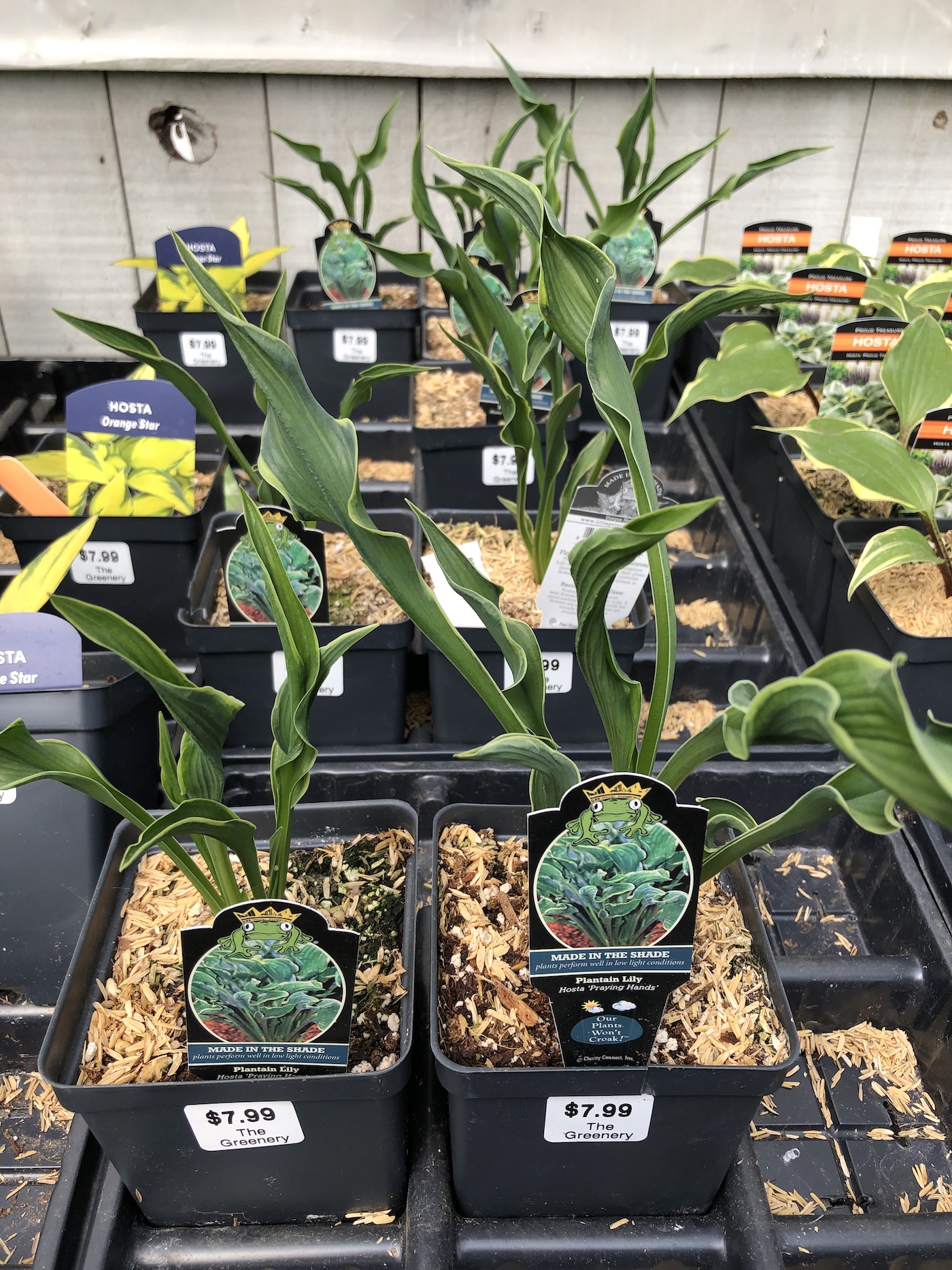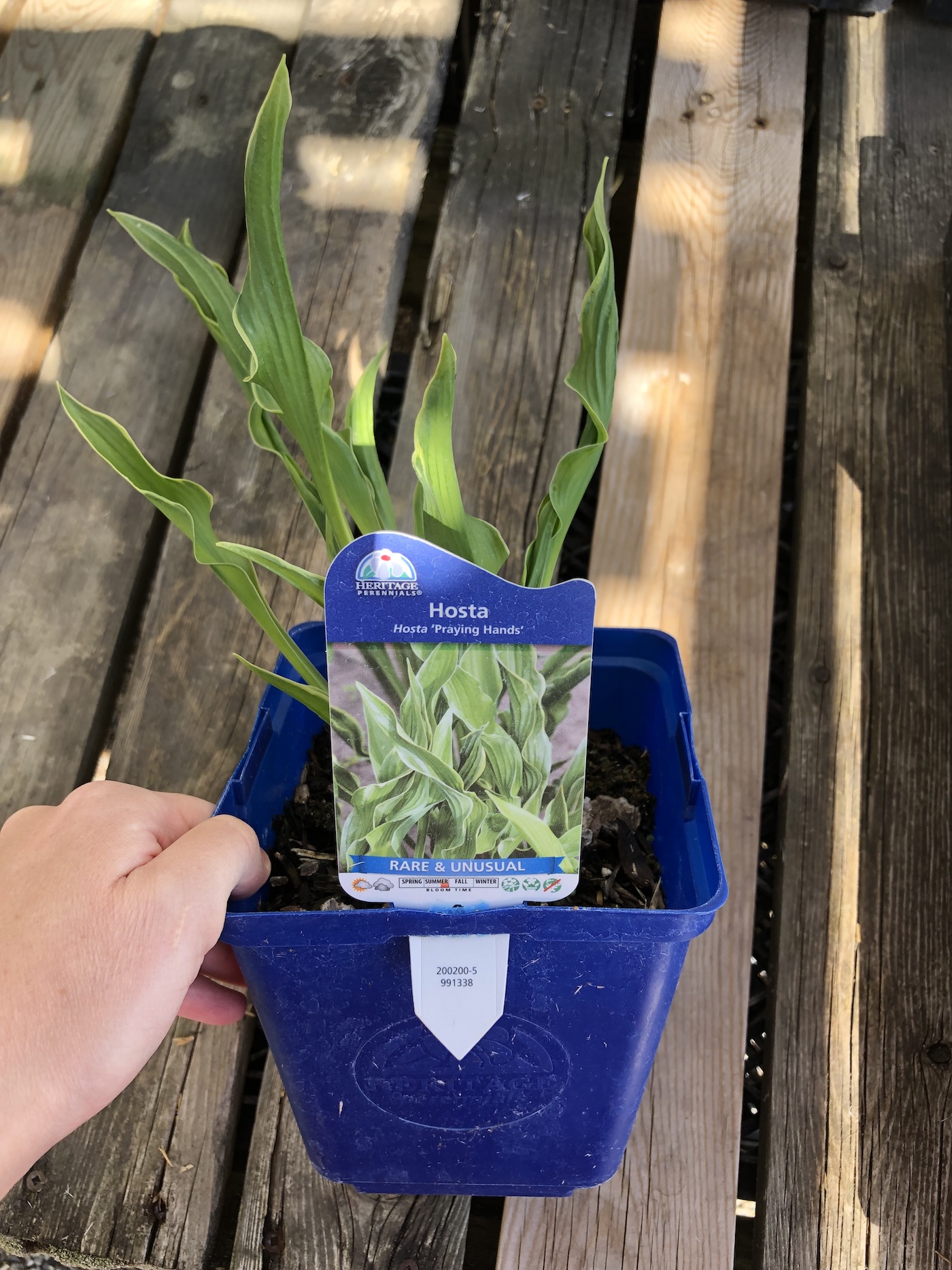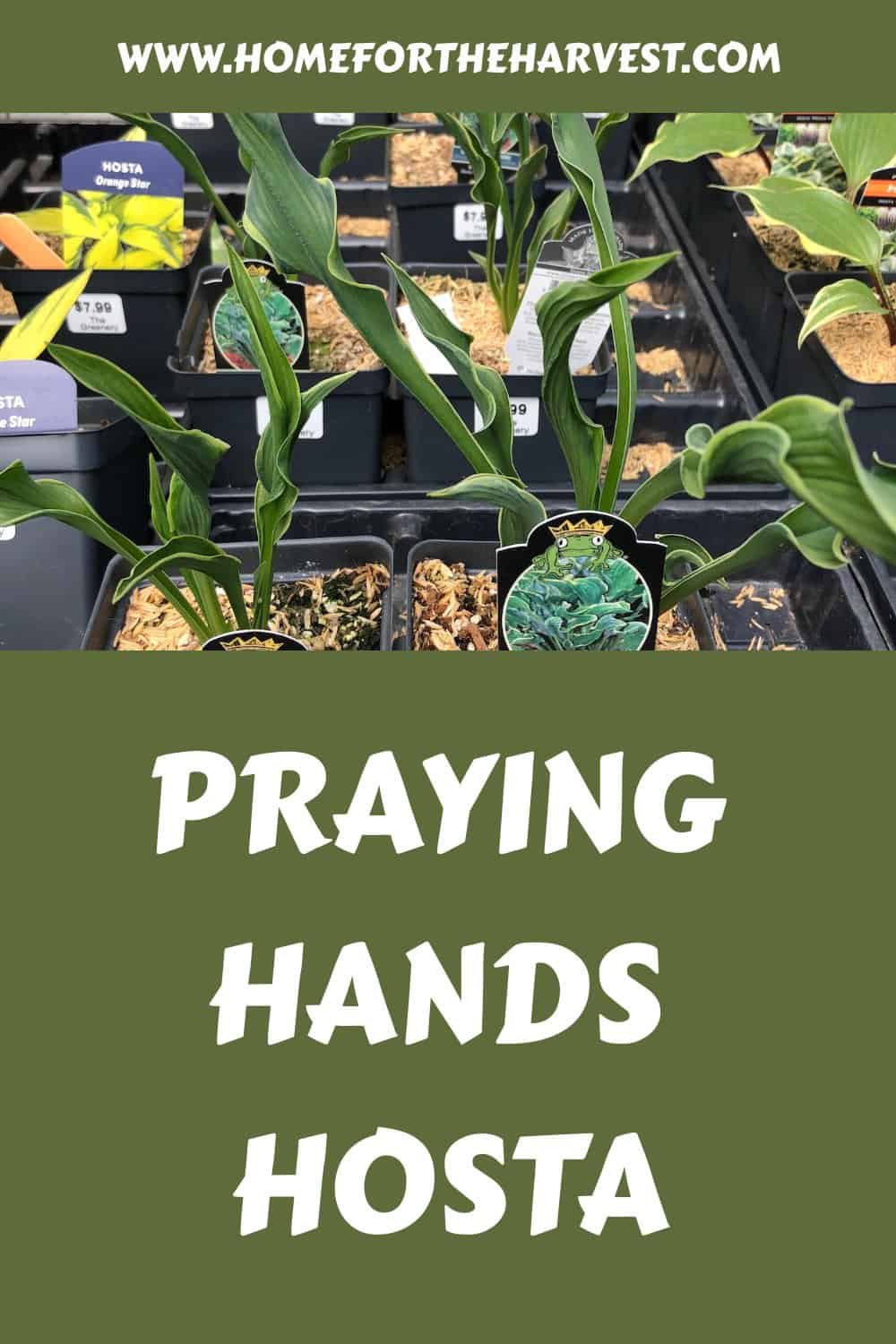Praying Hands hosta is a specialty variety with skinny upright leaves. Each leaf is slightly rolled at the base, has a wavy undulating edge, and a thin yellow margin on the otherwise dark green leaves. This variety also has purple bell-shaped flowers in late summer.
Praying Hands can be grown in zones 3-9, grows best in partial shade, and thrives in well-drained soil rich in organic matter. It is also one of the most unusual hosts to add to your collection.
Praying Hands hosta basics
Praying Hands hosta is a unique upright variety with twisted green leaves and very thin cream-colored leaf margins that give it a unique, subtle, variegated look. The flowers are also quite striking, with their rich purple color. They bloom in late summer and sometimes into early fall.
Praying Hands hosta prefers partial shade but can also tolerate partial sun as long as the soil is moist. It grows best in well-drained, humus-rich soil that has been amended with organic matter. Hostas are relatively easy to care for, and this one in particular is disease and pest-resistant.
Hostas can be propagated by division in spring or early fall. They can also be propagated by seed, but this is a slower process, and the plants will not necessarily resemble the parent plant (although they may be quite unique in their own right).
Where to plant Praying Hands hosta
Praying Hands hosta grows best in partial shade. It can also be grown in partial sun but does best when the direct sunlight only hits the leaves in the morning. Shade is particularly important in the afternoons and in hot climates.
Hostas grow best in slightly acidic soil rich in organic matter. While they are tolerant of clay, they grow most quickly in sandy loam soil. Poor soil can be improved by adding organic matter (like compost) and potentially mixing in some sand if the soil is very rich in clay. You can also mix in some organic starter fertilizer if you wish.
Praying Hands hosta can be grown in zones 3-9. Shade is key for hostas in zones 8-9, especially in the mid-day and afternoon. Like other hostas, it needs a chilling period of winter dormancy to thrive. The hosta should be sited where it can remain at temperatures below 40°F (4°C) for at least 3-4 weeks during the winter.
When to plant hostas
Spring and fall are the best times to plant hostas. If you are planting in spring, be sure to wait until all danger of frost has passed. If you are planting hostas in the fall, plant at least six weeks before the first expected frost date (read more about when to plant hostas for best results).

How to plant praying hands hosta
Praying hands hosta can be planted using a potted hosta from the nursery, from a bare root hosta (usually packaged in clear plastic bags), or a hosta bulb from a previous growing season. The planting process is very similar for both forms.
Start by preparing the soil by mixing in any amendments. Here is a detailed guide about preparing soil for planting hostas. Also, make sure the potted hosta has been well watered prior to planting.
Here are the basic steps for planting praying hands hosta:
- Dig a wide, shallow planting hole. The hole should be about two times the width of the container and only as deep as the root ball in the planter.
- Turn the potted hosta over and slide off the plastic nursery pot. Squeeze the sides gently if the root ball won’t slide out easily.
- Check for any thick white circling roots. Loosen the root ball with your fingers and straighten out any tightly wound roots.
- Place the root ball in the planting hole. Check that the soil level at the base of the plant is level with the soil surrounding the hole. The hosta shouldn’t be planted any deeper than it was in the plastic planter pot.
- Backfill the hole with amended soil, firming it gently around the base of the plant. Be sure not to bury the crown of the plant (where the leaves emerge from the soil).
- Water well to settle the soil and encourage root growth.
How to care for Praying Hands hosta
Praying hands hosta is a very easy plant to take care of. It is drought-tolerant once established and does not require much fertilization. Get these plants off to a good start, and they’ll reward you with low care requirements in future years.
Watering requirements
Praying hands hosta need moist, well-drained soil to thrive. Water them regularly, especially during hot, dry weather. You may need to water several times a week during midsummer heat waves or if they are receiving direct sunlight in the morning.
The best way to water these plants is to water the soil at the base of the stems rather than regularly watering the leaves from overhead. Use a watering wand or a drip irrigation system to apply water right at the soil level and keep the leaves dry. This will help reduce the chances of fungal disease.
Fertilizing hostas
Apply fertilizer twice a year—once in the early spring and once in the late summer. Choose a slow-release organic fertilizer rich in nitrogen. Most products of this type are granular and are easy to spread on the soil surface and then water in.
Pruning praying hands hosta
Light pruning is important to keep your praying hands hosta looking its best. You’ll need to cut away any dead or dying leaves and any that are yellowing or browning. You can also trim back any overgrown leaves that are torn or otherwise unsightly. Then, cut back the spent leaves in the late fall or early spring to make room for next year’s growth.
Plant care tips for Praying Hands hosta
If you want your praying hands hosta to thrive, you’ll need to take good care of it. Mulching and weeding are two important aspects of caring for this plant.
Mulching is adding a layer of organic or inorganic material to the soil to protect the plants from extreme weather conditions, suppress weed growth, and improve soil quality.
The most common type of mulch is organic mulch, which is made from materials like bark, leaves, straw, and grass clippings. Inorganic mulch, on the other hand, is made from materials like rocks, stones, and gravel. It’s important to choose the right type of mulch for your needs. If you’re using organic mulch, be sure to replenish it every year, as it will break down over time.
Weeding is also important for plant care. Be sure to remove any weeds that sprout up around your hosta. Weeds compete with plants for water, nutrients, and sunlight, so they can quickly take over if left unchecked. The best way to remove weeds is to pull them up by hand.
Companion plants for Praying Hands hosta
Companion plants can be a great way to improve the health and appearance of your Praying Hands hosta. Some good companion plants for this plant include:
- Other hostas, like heart-shaped leaf varieties for visual contrast
- Impatiens, which will help keep the soil moist and provide some added color
- Ferns, which will help shade the plant from direct sunlight
- Liriope, which is a grass-like plant that will help keep the soil from eroding
Pests affecting Praying Hands hosta
Several pests can affect your Praying Hands hosta, including slugs, snails, aphids, and Japanese beetles. Each of these pests can cause severe damage to the plant if left unchecked.
Slugs and snails can eat the leaves of the plant, while aphids and Japanese beetles can suck the sap from the leaves, causing them to turn yellow and brown. If you see any of these pests on your plant, be sure to remove them as soon as possible.
Diseases affecting hostas
There are a number of diseases that can affect your hostas, including powdery mildew, rust, and leaf spot. Each of these diseases can cause serious damage to the plant if left unchecked.
Powdery mildew is a white powdery fungus that can grow on the leaves of a plant. Rust is a red or brown fungus that can also grow on the leaves. Leaf spot is a black or brown spot that can form on the leaves.
If you see any of these diseases on your plant, be sure to treat them as soon as possible. Diseases can be controlled with the use of organic methods. Some organic methods include the use of neem oil, sulfur, or an organic fungicide spray.







